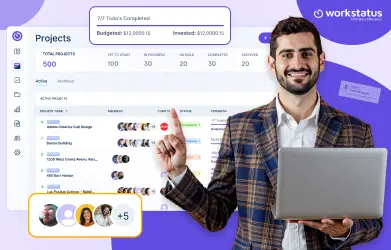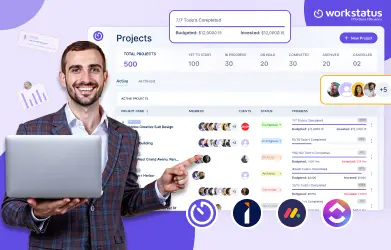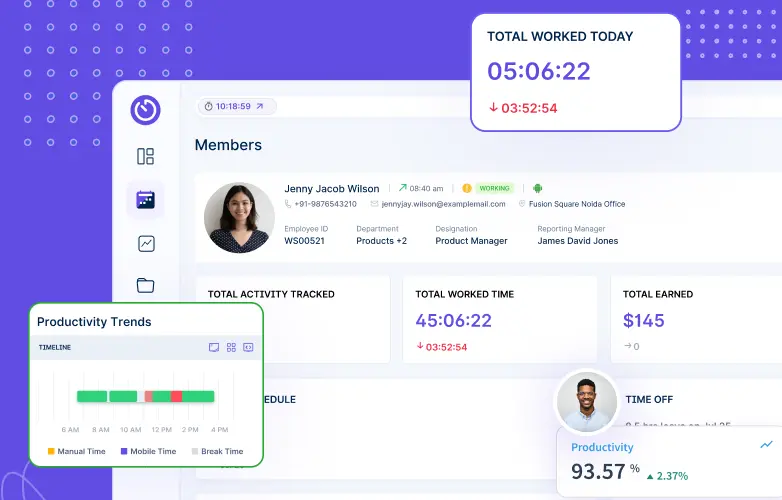Table of Contents
In today’s world, how we manage projects shapes how we get things done.
Recent surveys show that approximately 4 out of 10 people use project management methods to enhance their work efficiency.
As we go into 2024, lots of organizations – about 70% – think that managing projects well is really important for their success.
This blog post talks about seven crucial changes happening in project management.
From using smart technology like AI to making remote work easier, these trends are changing how projects are planned and finished for the best results.
Let’s dive in.
What Are The Top Project Management Trends In 2024?
Are you wondering about the big changes in project management this year?
Well, Project Management Offices (PMOs) have come a long way from using simple whiteboards and hand-drawn maps.
Nowadays, they use super-smart software and automation.
Project management keeps changing, so managers need to stay flexible. Many of these changes are because project teams have to deal with more people working from home and more automated processes.
We’ve gathered the seven most important trends for 2023.
Stick with us, and we’ll tell you how to make the most of them!
Trend 1: Artificial Intelligence (AI) Integration
Artificial Intelligence (AI) and automation are making a big splash lately. Take ChatGPT, for example—it’s getting a lot of attention.
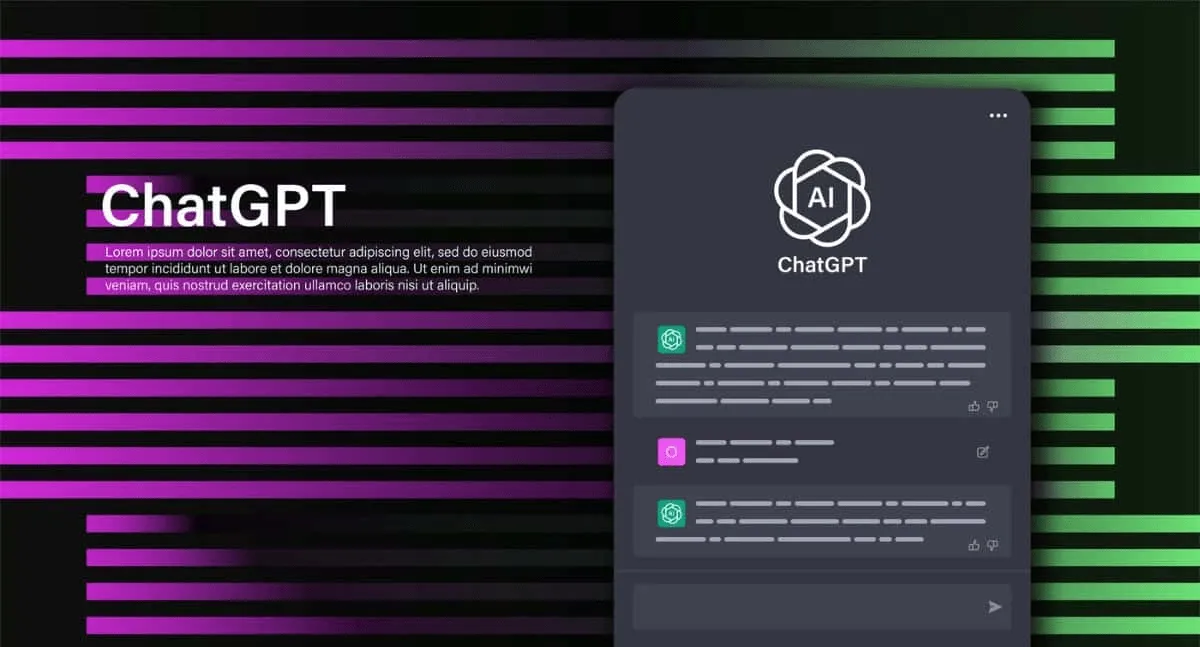
Project managers are considering how they can use AI in their work.
Even though ChatGPT is entirely new, project managers should learn about what it can do and keep an eye on how it grows.
According to Forbes, a whopping 83% of bosses say AI is a super important thing for their businesses.
Automation is also a big deal that project managers should follow closely. While automation isn’t new, when you mix it with AI and other smart tech, it can create amazing advantages for project managers.
Let’s see how it works!
How managers can become master of this trend
To master these new trends, project managers can use ChatGPT to help with lots of tasks like:
- Summarizing reports
- Answering questions about projects
- Starting project plans and budgets
Right now, these tools might be less advanced, but as they get better, they could become even quicker at helping out.
Learning how to use these AI tools is the first step.
Automation is always helpful in project management, but the big thing in 2023 is hyperautomation. This goes beyond normal automation by using:
Machine Learning (ML) to manage risks, decide where resources should go, plan schedules, and more.
Document Automation for making status reports, following rules, and taking notes in meetings.
Robotic Process Automation (RPA) for tedious tasks and ensuring accurate data entry.
Optical Character Recognition (OCR) for reading text from images, graphs, or handwritten notes.
Knowing when and how to use automation is a big deal for today’s project managers. In addition to project management tasks, AI-powered writing tools can level up your writing by correcting grammar, spelling, and punctuation errors, ensuring that your documents are polished and professional.
Automating simple tasks helps you focus on the important stuff and get things done faster and better.
Trend 2: Remote Work Optimization
Remote Work Optimization has become a significant trend, transforming how people work. It’s about making remote work more efficient and productive.
Here’s what it involves:
Flexible Work Arrangements: Companies offer more flexibility, allowing employees to work from home or choose their work hours.
Digital Collaboration Tools: Tools like video conferencing, messaging apps, and project management software help remote teams communicate and collaborate seamlessly.
Focus on Work-Life Balance: Remote work optimization emphasizes maintaining a healthy balance between work and personal life.
Remote Security Measures: Ensuring data security and privacy by using secure networks and following strict protocols for remote access.
With this trend, companies are rethinking traditional work setups.
They’re finding new ways to keep teams connected and productive, even if they’re not in the same physical space.
Remote Work Optimization isn’t just about working from home; it’s about creating an environment where remote work is efficient, enjoyable, and beneficial for both employees and employers.
How managers can become master of this trend
Project managers can get better at handling the rise of continued remote work and the four-day workweek trend.
With fewer workdays, planning projects and meeting deadlines becomes more important.
But shorter weeks sometimes mean more work done. In the UK, a trial showed that working less time can make people more productive.
In this new way of working from anywhere and with flexible schedules, project managers need to be good at communicating and sharing tasks. Using automated tools like Workstatus to track time and assign tasks will be really helpful.
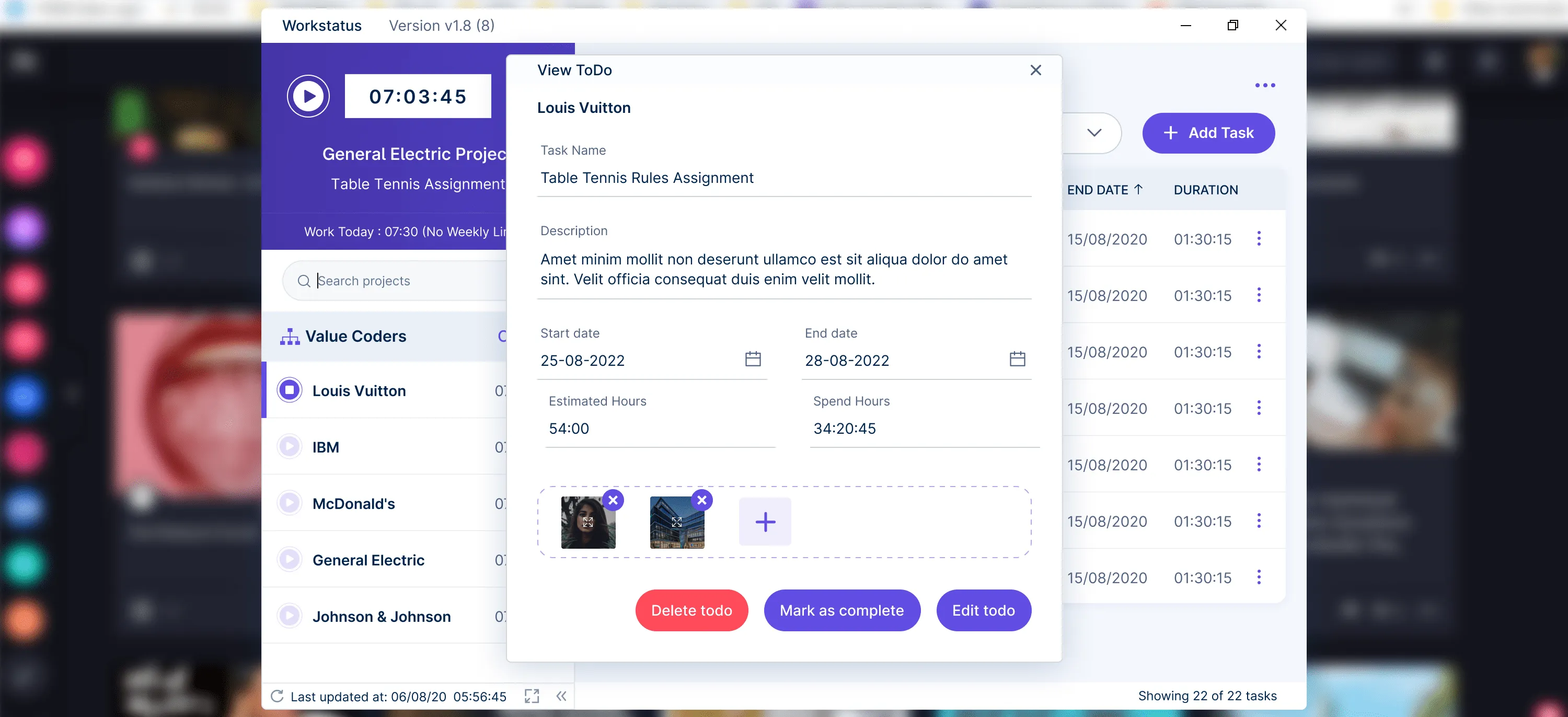
Our advice? Embrace the changes. Managers who are open to flexible schedules will do better than those who aren’t.
Focus on the good side of working flexibly – it can make us more productive, prevent getting too tired, and help us work together better.
Trend 3: Agile and Hybrid Methodologies
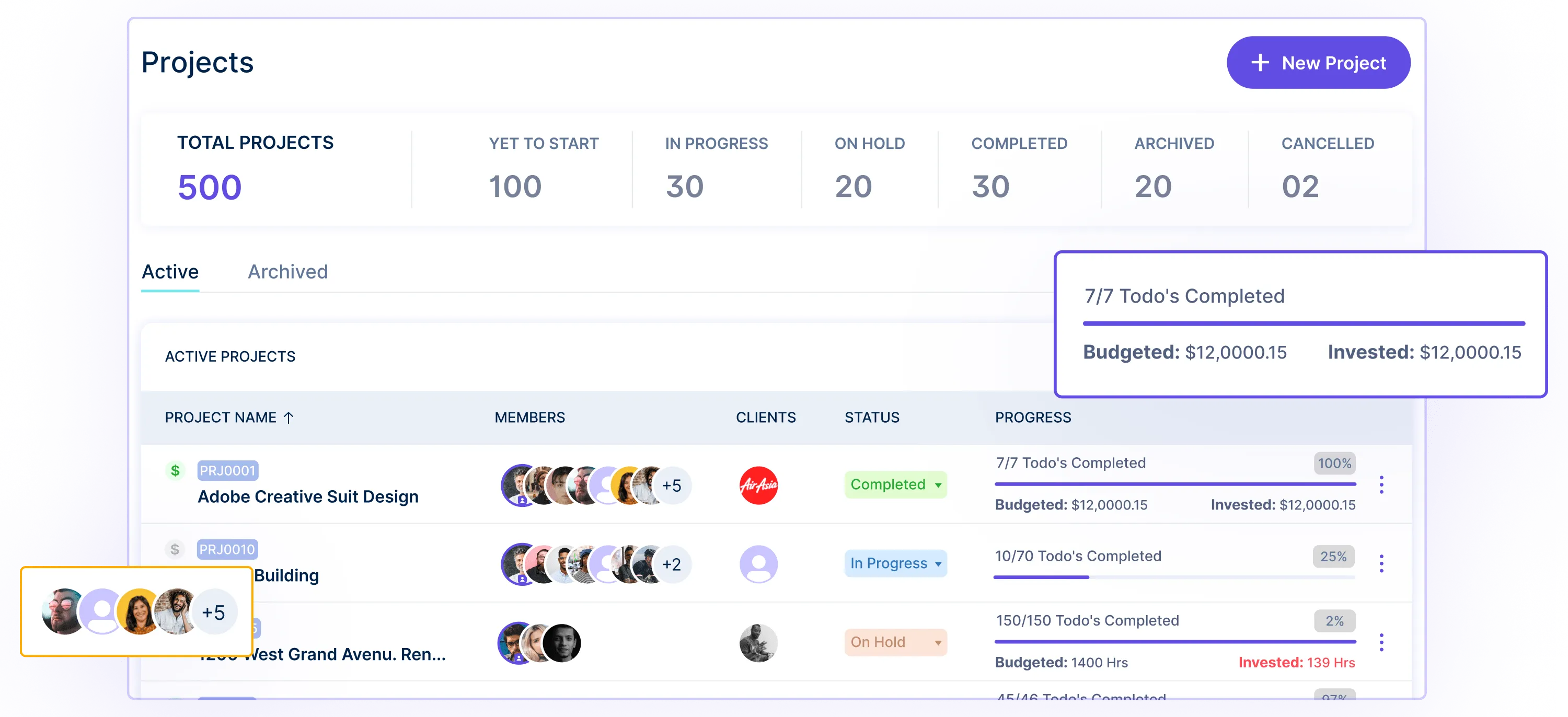
Hybrid project management is a new way that businesses are trying out. They’re testing different project methods all at once to find what works best.
Hybrid project management mixes different ways of doing things, like:
Agile: This method focuses on delivering working software fast without needing lots of documentation.
Scrum: This method breaks work into small parts and aims to deliver them quickly.
Waterfall: It’s a step-by-step way of managing projects where tasks flow in a sequence through different phases.
Managers are now blending their Agile approach with some older methods they used before Agile became famous.
They’re mixing and matching to make project management even better.
How managers can become master of this trend
Project managers can use a hybrid approach to get really good at this trend. This means they can mix different ways of managing projects to match what’s best for their team and their work.
Instead of just using Agile, teams aim to be flexible to make their projects successful.
To master this way of working, try different hybrid methods and see which mix works best for your team.
It’s like testing things to find what makes your team work the best and get the best results.
For example, you could use a traditional way like Waterfall for simple tasks and try Agile or Scrum for more complex or urgent projects.
Mixing these ways could be the key to managing projects really well.
Don’t Know How To Manage Agile Projects?
Automate Agile Project Management With Workstatus
Trend 4: Emphasis on Emotional Intelligence (EI)
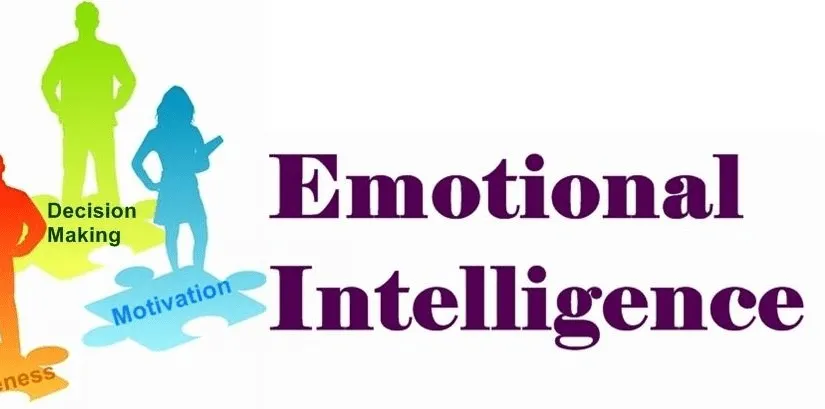
Leadership skills are essential for project managers. One new way of leading is called emotionally intelligent leadership, or EQ.
A report from the World Economic Forum says there’s a growing need for leaders with emotional intelligence worldwide.
EQ is about using feelings like understanding others, knowing yourself, and staying motivated to lead.
Leaders know that being kind and understanding makes their team happy and keeps them wanting to stay.
A study found that employees are way less likely to leave their jobs if a boss has high EQ.
We’re moving away from bosses who only give orders and make people work too much until they’re tired.
A recent example is Twitter (now X). Since Elon Musk took over and acted in a way that broke the rules of traditional leadership, 80% of their workers have left.
Leading with care and focusing on what your team is good at can improve work and help everyone work together well.
How managers can become master of this trend
Managing projects is about more than just finishing tasks on time. It’s also about leading your team well. Handling people is more complex than managing project schedules or money.
That’s where EQ, or emotional intelligence, comes into play.
Project managers need to know how their team works together. They should understand what each person is good at and where they might need help.
Depending on how team members feel, managers should change how they lead, set deadlines, and create a good team atmosphere.
A helpful tip for managers is to talk with their team about their work-life balance and determine what stresses them out.
Use your one-on-one meetings for more than just talking about projects.
Try to see how your team feels mentally and if they’re happy overall.
Are you also looking for project management tips?
Read the below infographics to learn some essential tips for project management.
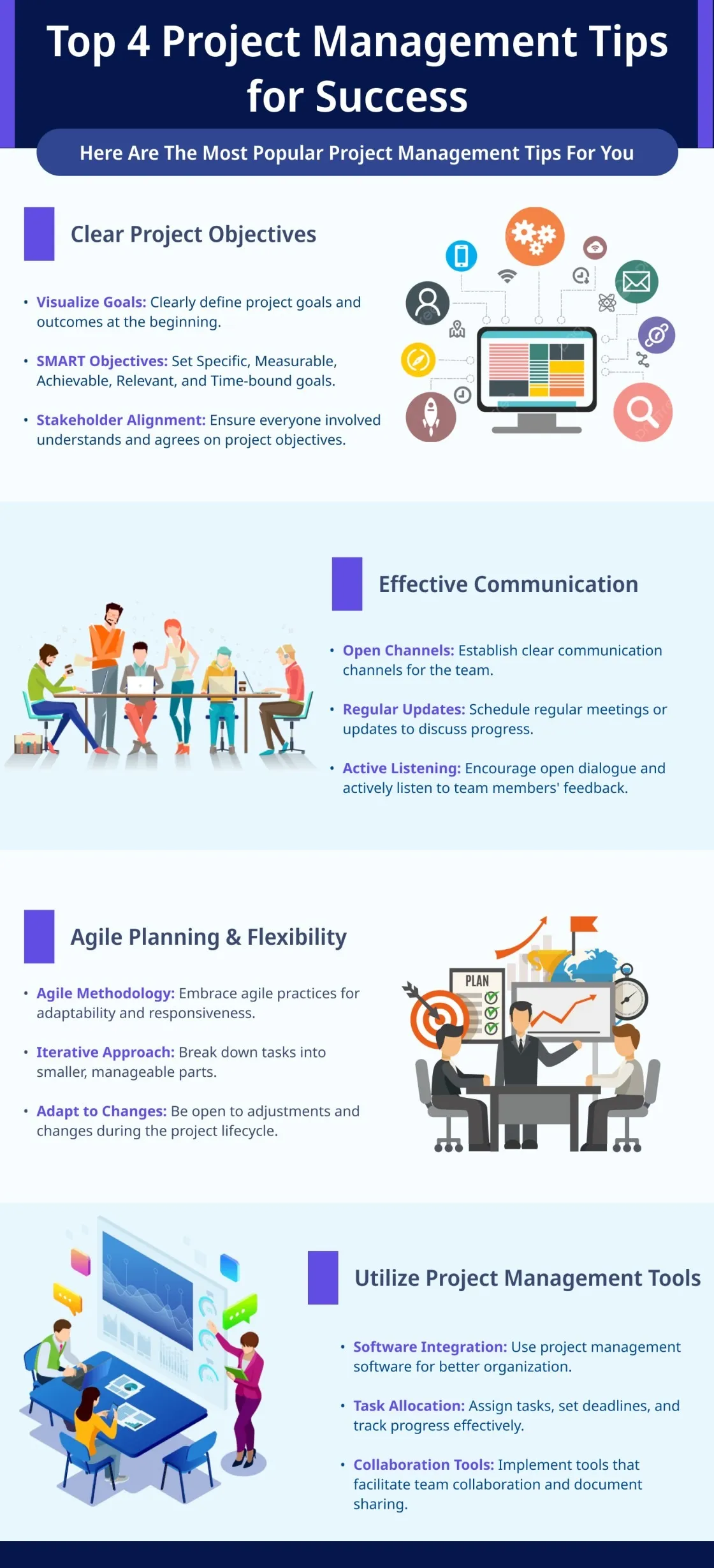
Let’s continue to review the remaining project management software trends.
Trend 5: Sustainability and Green Project Management
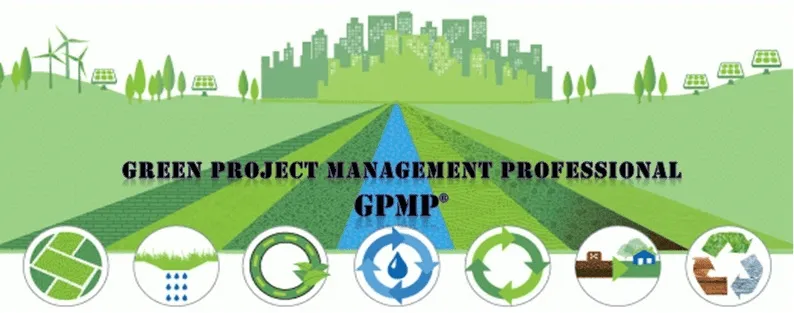
Sustainability and Green Project Management is all about doing projects in a way that’s good for the environment.
It’s like doing our work while taking care of nature. Here’s what it means:
Reducing Waste: Avoid wasting things like paper, energy, or water during projects.
Using Eco-Friendly Materials: Choosing materials that are better for the environment, like recyclable or renewable ones.
Minimizing Pollution: Doing things to stop making the air, water, or land dirty during project work.
How managers can become master of this trend
Learn about Green Practices: Understand how to do projects in an eco-friendly way and use materials that are good for the environment.
Implement Eco-Friendly Methods: Encourage your team to use less energy, reduce waste, and choose materials that are better for nature.
Measure and Monitor Impact: Track how your projects affect the environment and discover the ways to improve and reduce the negative impact.
By following these steps, managers can lead projects that are successful and considerate of our planet’s well-being.
Trend 6: Blockchain for Project Transparency and Security
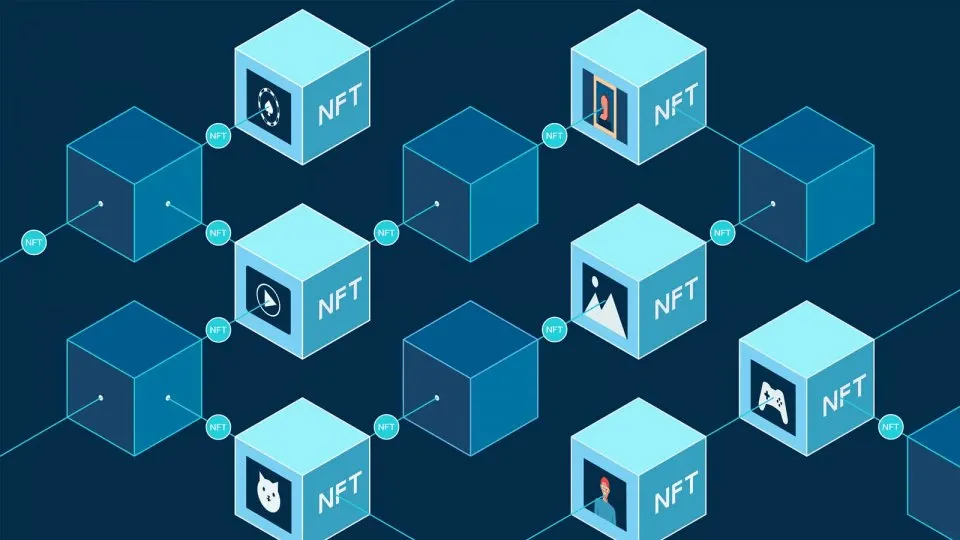
Blockchain for Project Transparency and Security is like a super secure and transparent way to do projects.
This technology ensures transparency and security, allowing all stakeholders to view project progress while safeguarding data.
Here’s what it does:
Transparency: It makes everything open and visible to everyone involved in the project. No secrets!
Security: It keeps all project information safe using special codes and makes sure no one can change things without others knowing.
Trust: Because everything is visible and secure, everyone can trust that what they see is true and can’t be changed.
How managers can become master of this trend
Let’s see how managers can become experts in this trend.
Learn Blockchain Basics: Understand how Blockchain works and its benefits for project management.
Implement Blockchain Tools: Blockchain technology ensures transparency and security in project documentation and information sharing.
Stay Updated: Keep up with new developments and tools in Blockchain for better project management.
By following these steps, managers can lead projects with increased transparency and security, ensuring everyone trusts the process and the information shared.
Trend 7: Project Management System
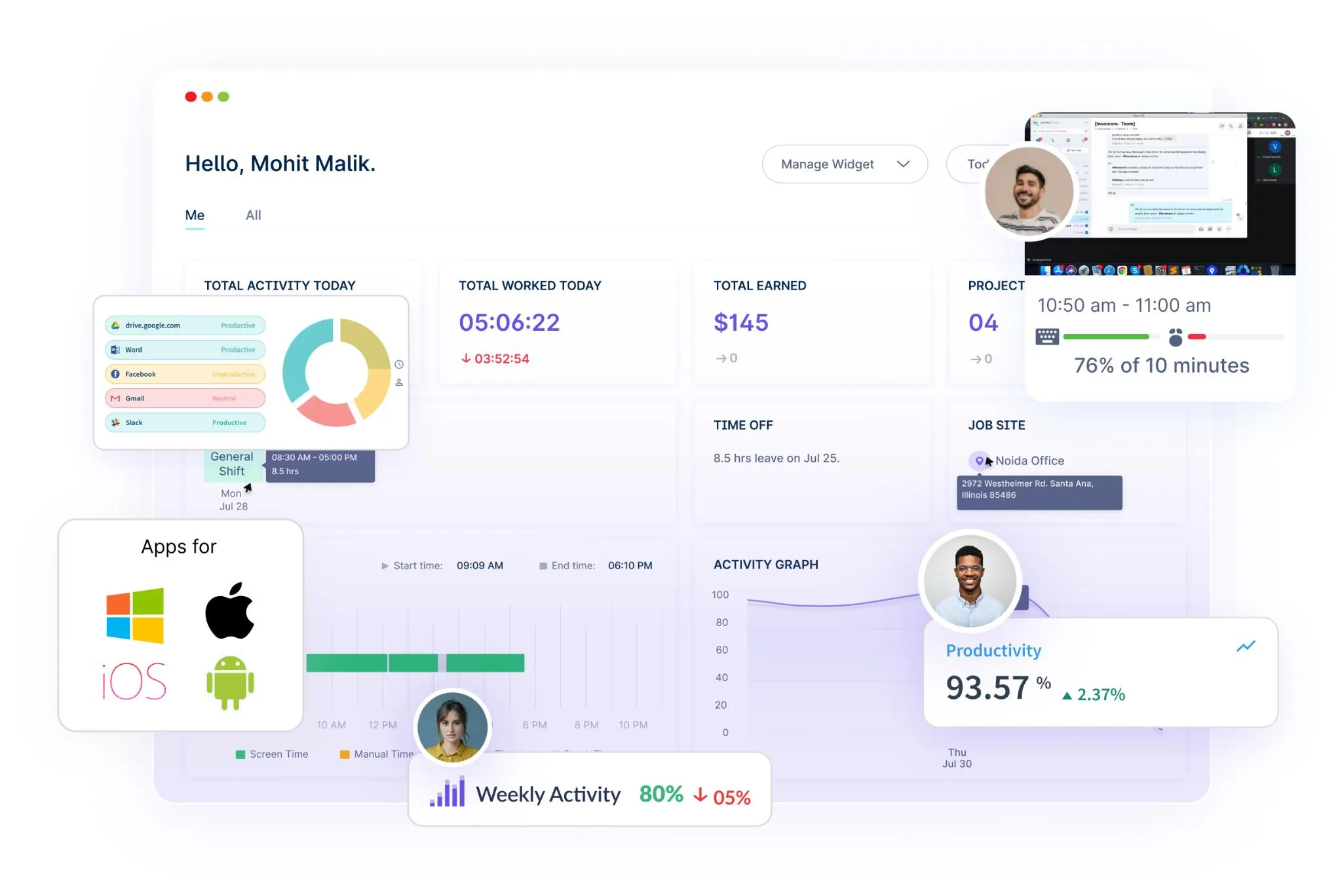
The trend of a “Project Management System” is like having a unique way to organize and handle all the work in a project.
It’s like a complete toolbox with valuable things for managing projects.
Here’s what it involves:
Centralized Organization: It keeps all project information, tasks, and details in one place, making it easier for everyone to access and work together.
Task Management: Helps assign tasks, set deadlines, and track progress for each part of the project.
Communication Tools: Provides ways for team members to talk, share ideas, and work together quickly, even if they’re not in the same place.
File Storage and Sharing: Keeps all project-related documents and files safe and allows everyone to access and share them when needed.
Overall, a Project Management System is a helpful tool that keeps everyone organized and working together smoothly to complete projects successfully.
How managers can become master of this trend
A good project management system is super important. It helps Project Management Offices (PMOs) plan things, automate tasks, and keep an eye on how things are going.
However, picking the right tool for your team can be tricky. There are many tools out there, but how do you find one that works best for your team and your work?
Our advice is to try free trials or demos of different tools to see which one fits your team’s way of working. If you already have a tool you really like, that’s great!
Just make sure to keep learning about new features, check how the tool is improving, and share your thoughts with others using the same tool.
This way, your tool can keep up with your team’s needs.
How Can Workstatus Help You As A Project Management Tool

We’re excited to tell you about Workstatus Tasks, our project management tool designed to help project managers understand how their teams work for smarter decisions.
Using Workstatus for managing projects brings a lot of benefits:
Agile Workflows: Add tasks and team members and use drag-and-drop tools to organize tasks better, like planning Sprints and accessing reports to visualize your work better.
Automation: Set up project Timelines and custom workflows to automate tasks, saving time and keeping focus. You can even automate routine tasks, making things easier.
Real-time Project Costing: Connect Workstatus Tasks with Workstatus’s time tracking to see how much a project costs in real-time. This helps set budgets and manage projects better.
Reporting: Get detailed reports and set goals to track progress easily. See how much time team members spend on tasks and understand the return on investment for projects.
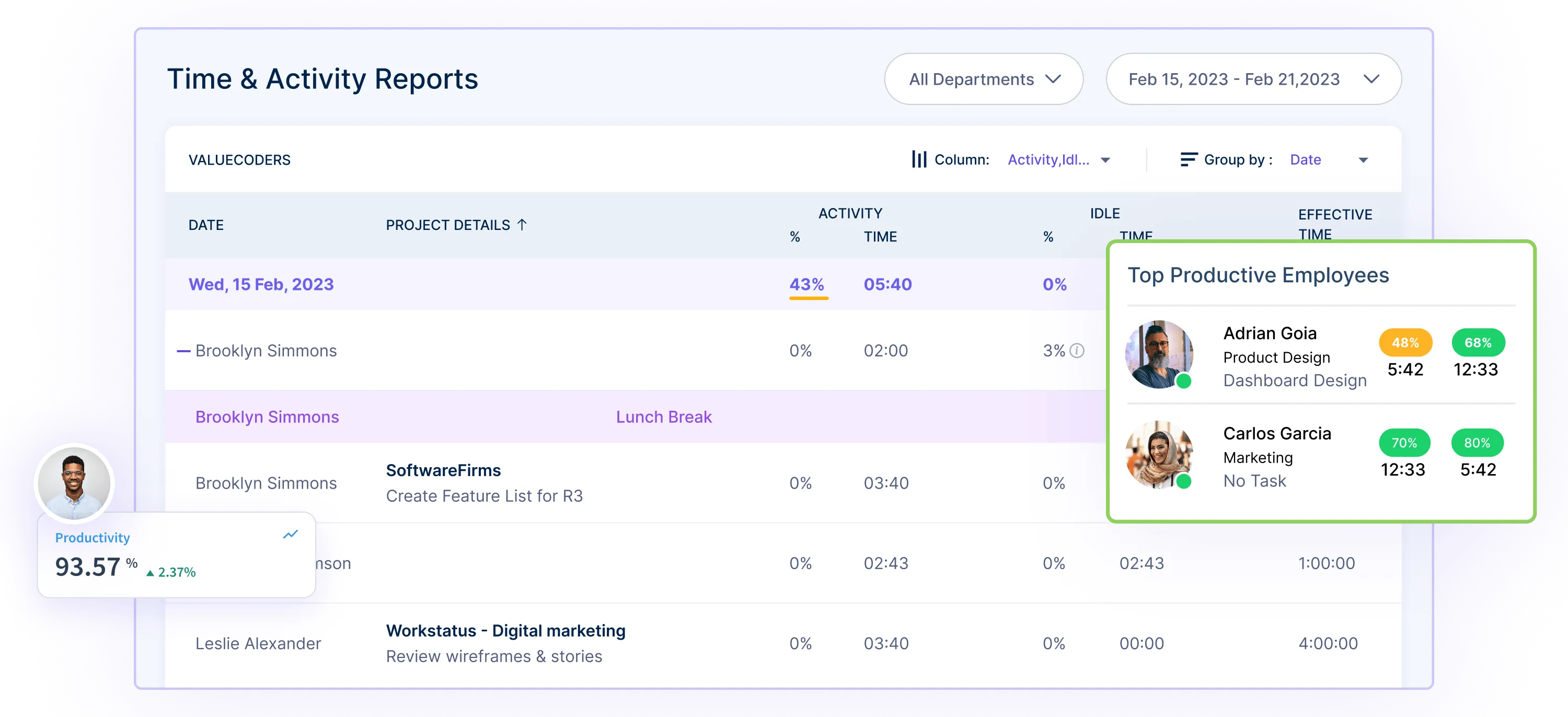
Communication: Stay in sync without constant meetings using automated Stand-ups. It helps plan projects better and keeps work on track without extra meetings.
Using Workstatus Tasks helps project managers organize work efficiently and make informed decisions for better productivity.
Closing Thoughts
In wrapping up, mastering these top 7 project management trends in 2024 is crucial for success.
While the future of these trends remains uncertain, what stays constant is the need for adaptability in project management.
Being flexible and open to change will continue to be the cornerstone for effective project leadership in the evolving landscape.



